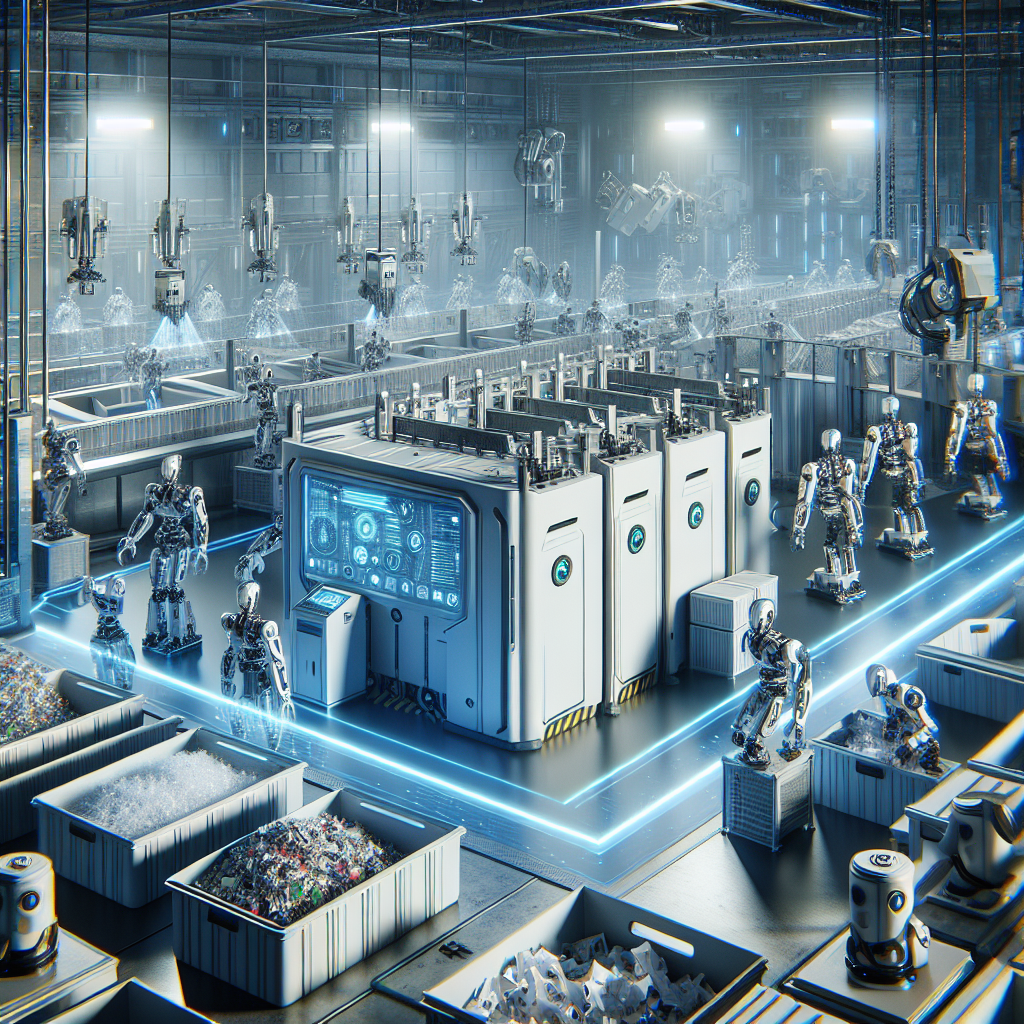Reducing Waste with AI: Innovations in Recycling and Resource Management
In the age of rapid technological advancement, artificial intelligence (AI) emerges as a beacon of hope in combating one of the most pressing challenges of the 21st century—waste management. As global populations soar and consumption patterns skyrocket, the by-products of our modern lifestyle increasingly threaten environmental stability. However, AI presents innovative solutions for recycling and resource management that could revolutionize how we reduce waste, thereby offering a pathway to sustainable living. This article explores how AI-driven technologies are transforming waste reduction efforts through smarter recycling and resource management.
AI in Recycling: Streamlining Processes
Recycling, a critical component of waste reduction, has often been hampered by inefficiency and contamination issues. AI steps into this arena with sophisticated sorting technologies that surpass the capabilities of traditional systems. For instance, AI-powered robots equipped with vision systems can identify and sort recyclables from a conveyor belt of waste, distinguishing materials based on type, color, and even brand. This precision reduces contamination rates in recycling streams, ensuring that more materials can be effectively recycled.
Moreover, these AI systems learn and adapt over time, improving their sorting accuracy and speed, which significantly enhances the efficiency of recycling operations. By automating the sorting process, these innovations not only cut down on labor costs but also minimize the risk of workplace injuries, creating a safer environment for workers.
Enhancing Resource Management through AI
Beyond recycling, AI technologies play a crucial role in broader resource management strategies. For instance, AI can optimize the collection and transportation of waste by analyzing data on waste generation patterns. Smart waste management systems utilize sensors in bins and containers to monitor fill levels and signal when collections are needed, thereby avoiding unnecessary pickups and reducing fuel consumption.
Additionally, AI-driven analytics can forecast waste generation trends, assisting municipalities and organizations in planning more effective waste reduction strategies. By predicting high waste production periods or identifying areas with poor recycling rates, these systems enable targeted interventions that can significantly improve waste management outcomes.
AI in Material Recovery
Material recovery facilities (MRFs) are also benefitting from AI innovations. Advanced sorting technologies not only segregate waste more accurately but also identify materials that were previously considered non-recyclable. For example, AI can detect and extract valuable materials from electronic waste (e-waste), one of the fastest-growing waste streams globally. This capability not only diverts hazardous materials from landfills but also recovers precious metals and other resources that can be reused, promoting a circular economy.
The Role of AI in Reducing Food Waste
Food waste is another critical area where AI is making strides. Through machine learning algorithms, AI systems can predict the shelf life of produce and other perishable items more accurately, helping retailers reduce spoilage. Furthermore, AI can streamline supply chain operations, ensuring that food is distributed more efficiently and wastage is minimized.
Challenges and Considerations
While the potential of AI in transforming waste management is immense, there are challenges to consider, including the need for significant investment in technology and infrastructure. There’s also the issue of data privacy and security, particularly when AI systems handle sensitive information. Moreover, the shift towards automation raises concerns about job displacement, underscoring the need for retraining and education programs for workers.
FAQs
Q: Can AI completely replace human workers in recycling facilities?
A: While AI can significantly improve efficiency and safety, human oversight remains crucial for managing operations and handling exceptions. The goal is to complement human efforts, not replace them entirely.
Q: How does AI help in reducing food waste?
A: AI helps in reducing food waste by predicting the shelf life of products more accurately, optimizing supply chain operations, and ensuring efficient distribution, thus minimizing spoilage and overstocking.
Q: Is investing in AI for waste management cost-effective?
A: While initial investments can be high, the long-term savings from increased efficiency, reduced contamination, and better resource recovery can outweigh the costs. Additionally, the environmental benefits contribute to the overall value.
Q: Can AI technologies handle all types of waste?
A: AI technologies are rapidly advancing and can handle a wide range of waste types. However, the effectiveness can vary depending on the complexity of the waste stream and the sophistication of the AI system.
Q: What is the future of AI in waste management?
A: The future of AI in waste management looks promising, with continuous improvements in technology making systems smarter and more efficient. The integration of AI with other emerging technologies like the Internet of Things (IoT) and blockchain could further enhance waste reduction efforts, leading to more sustainable practices worldwide.
Conclusion
The integration of AI into recycling and resource management represents a significant leap forward in our quest to mitigate waste. By harnessing the power of AI, we can transform the way we manage waste, making the process more efficient, safer, and more sustainable. As we continue to innovate, the potential for AI to drive further advancements in waste reduction is vast, offering hope for a cleaner, more sustainable future. The key lies in embracing these technologies, overcoming the challenges, and moving towards a circular economy where waste is minimized, and resources are maximally utilized.

